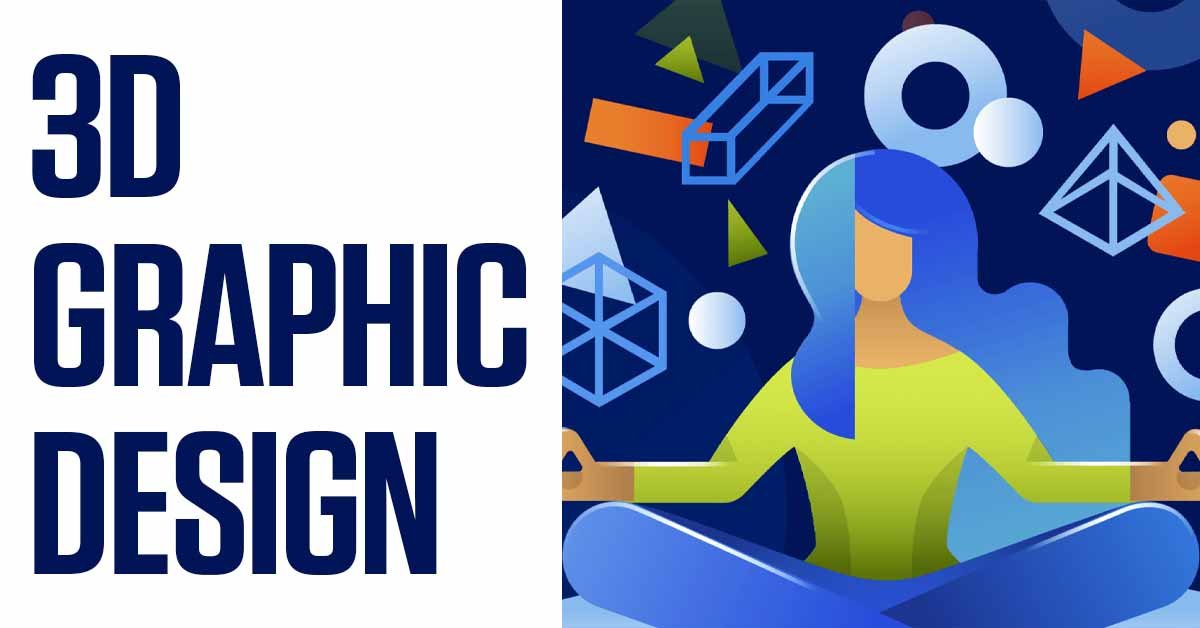Introduction
3D graphic design is an exciting and rapidly evolving field that combines artistic skills with technical expertise to create three-dimensional visuals. From movies and video games to advertising and product design, 3D graphics are used in a wide range of industries to create realistic and immersive experiences.
The Rise of 3D Graphic Design
- Advancements in Technology
- Advances in computer hardware and software have made 3D graphic design more accessible and affordable. Powerful graphics processors and sophisticated software enable designers to create complex 3D models and animations.
- Increased Demand
- There is a growing demand for 3D graphics in various industries, including entertainment, advertising, and education. This demand is driven by the need for more engaging and realistic visual content.
- Creative Possibilities
- 3D graphic design opens up a world of creative possibilities. Designers can create anything from lifelike characters and environments to abstract and fantastical visuals.
Applications of 3D Graphic Design
- Entertainment and Media
- 3D graphics are extensively used in movies, television shows, and video games to create realistic characters, environments, and special effects. They enhance storytelling by bringing imaginary worlds to life.
- Product Design and Prototyping
- In product design, 3D modeling is used to create detailed prototypes and visualize products before they are manufactured. This helps in identifying design flaws and making improvements.
- Advertising and Marketing
- Advertisers use 3D graphics to create eye-catching visuals for
- campaigns, such as animated commercials, product visualizations, and immersive experiences. 3D design allows for more dynamic and engaging content that can capture the audience’s attention more effectively.
- Architecture and Interior Design
- Architects and interior designers use 3D modeling to create realistic visualizations of buildings and spaces. These 3D renderings help clients visualize the final outcome and make informed decisions about the design.
- Virtual and Augmented Reality
- 3D graphics are essential in creating immersive experiences for virtual reality (VR) and augmented reality (AR) applications. From gaming to educational tools, 3D design plays a key role in these emerging technologies.
- Education and Training
- 3D models and simulations are used in educational settings to provide interactive learning experiences. They are also used in training programs to simulate real-world scenarios, such as medical procedures or technical tasks.
Tools and Software for 3D Graphic Design
- Blender
- Blender is a free and open-source 3D creation suite that supports the entire 3D pipeline, including modeling, rigging, animation, simulation, rendering, and compositing. It’s a powerful tool for both beginners and professionals.
- Autodesk Maya
- Maya is a professional 3D software widely used in the film, television, and gaming industries. It offers a comprehensive set of tools for 3D modeling, animation, visual effects, and rendering.
- Cinema 4D
- Cinema 4D is known for its ease of use and is popular among motion graphics designers. It provides powerful tools for 3D modeling, animation, and rendering, making it ideal for creating complex visual effects and motion graphics.
- ZBrush
- ZBrush is a digital sculpting tool that excels in creating detailed 3D models with high-resolution textures. It’s particularly popular in the fields of character design, gaming, and film production.
- Unity and Unreal Engine
- Unity and Unreal Engine are game engines that also offer robust 3D design tools. They are used for creating real-time 3D environments and experiences, particularly in gaming, VR, and AR.
Skills Required for 3D Graphic Design
- 3D Modeling
- 3D modeling is the process of creating a three-dimensional representation of an object or character. It requires an understanding of geometry, spatial relationships, and the ability to use 3D modeling software.
- Texturing and Shading
- Texturing involves applying surface details, such as colors and patterns, to 3D models. Shading is the process of defining how light interacts with the surfaces of the model to create realistic effects.
- Animation
- Animation in 3D graphic design involves creating movement for characters and objects. This requires knowledge of keyframing, rigging, and the principles of animation.
- Lighting and Rendering
- Lighting is crucial in 3D design to create depth, mood, and realism. Rendering is the process of generating the final image or animation from the 3D model, which involves setting up the lighting, materials, and camera angles.
- Problem-Solving and Creativity
- 3D graphic design often involves solving complex visual challenges, such as creating realistic textures or simulating natural phenomena. Creativity is key to finding innovative solutions and producing original designs.
Tips for Aspiring 3D Graphic Designers
- Start with the Basics
- Begin by learning the fundamental concepts of 3D design, such as modeling, texturing, and lighting. Master the basics before moving on to more advanced techniques.
- Practice Regularly
- Consistent practice is essential for improving your skills. Work on personal projects, participate in challenges, and experiment with different styles and techniques.
- Build a Strong Portfolio
- A well-rounded portfolio showcasing your best work is crucial for attracting clients or employers. Include a variety of projects that demonstrate your skills in modeling, texturing, animation, and rendering.
- Stay Updated with Industry Trends
- The field of 3D graphic design is constantly evolving. Stay informed about the latest tools, techniques, and trends by following industry blogs, tutorials, and attending workshops or conferences.
- Collaborate with Others
- Collaboration can provide valuable learning opportunities and help you gain different perspectives. Work with other designers, animators, or developers to create more complex and polished projects.
Conclusion
3D graphic design is a dynamic and creative field with applications across various industries. Whether you’re interested in entertainment, product design, advertising, or virtual reality, mastering 3D design skills can open up a wide range of career opportunities. By learning the essential tools, practicing regularly, and staying updated with industry trends, you can build a successful career in 3D graphic design and create visually stunning and impactful work.
